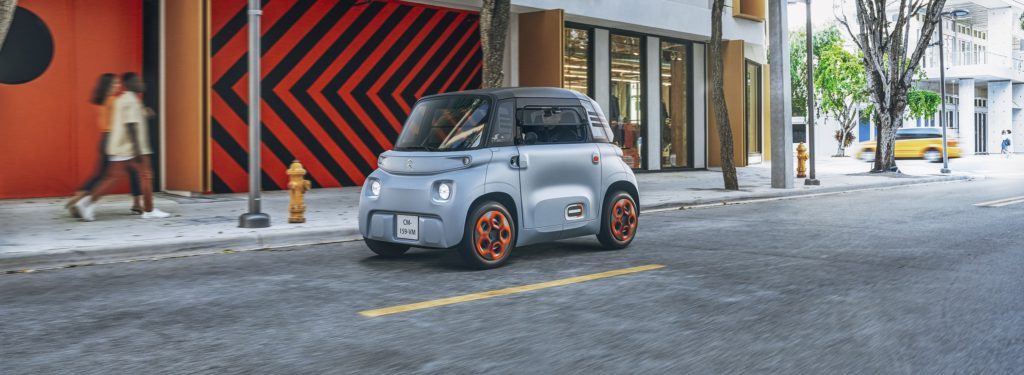City EV targets new market audience
28 February 2020

28 February 2020
Citroen has made their latest move in the city car game. The French manufacturer’s tactic appears to be taking aim at a younger target audience.
Coming in at €6,000, the Ami is a very affordable two-seater electric vehicle (EV). Technically classified as a quadricycle, it can be driven by anyone over the age of 14 in France and potentially anyone over 16 with a provisional licence in the rest of Europe and the UK.
Citroen has asserted the vehicle has not been designed with any one group in mind. ′The common denominator among all future users will not be their gender, age, socio-professional category, place of residence or even less their level of education, but rather their need for mobility.’ Said Michel Costa, market research manager at Citroen.
′I am talking about the need for a solution for frequent trips, short distances (going to the supermarket, to the gym), a solution that is simple and easy to access and use (no need for a licence, protected).’
There may be a fair amount of interest across the board for a relatively cheap mode of urban transport, but the vehicle does present itself as an attractive option for younger people still waiting on their full licence.
The French manufacturer has also leant heavily towards online distribution. In the launch statement, they claim, ′Ami is part of a 100% online customer journey, which is intended to be easy and smooth. Ami makes life easier for its customers in accessing mobility by offering them several formulas through digital solutions: car sharing, rental or purchase.’
The figures
In terms of payment plans, the Ami will be available for €19.99 a month with an initial payment of €2,644. For those who’d rather not own an Ami, a fleet hire option under Free2Move will be available, costing as little as 26 cents per minute.
The EV can travel at up to 45kmh with a range of 70 kilometres. Its 5.5kWh lithium-ion battery is housed under a flat floor, allowing the EV to keep compact at 2.41 metres long and 1.39 meters wide. Once plugged in, three hours are enough for a full charge on a conventional 220v socket.
Getting into the vehicle will also be a more novel experience as one door will sit on a traditional front-hinge, while the other will be attached via a rear-hinge. This means greater symmetry in body panels, so less tooling and lower production costs for Citroen. The two side windows open upwards and are identical too, just like the front and rear bumpers and under-body panels.
Another contender
This week Renault also announced the Twingo Z.E. would be released this year. With a water-cooled 21kWh battery and a 60kW output, this EV will have ten times the power of the 6kW Ami. The French car manufacturer claims the Twingo will have a range of 180 kilometres under WLTP testing. In its city mode, this range could shoot up to 250 kilometres because of recuperation phases.
Charging to 80% at 22kW should take just over an hour. At a single-phase wallbox (7.4kW) this would increase to four hours. The Twingo will reportedly not have an option for a CCS DC charger.
Low prices and high production costs have previously made the A-segment a challenging area for manufacturers. Last year Ford ended the sales of the Ka+ minicar in Europe to improve profitability in the region. In 2018 Opel announced Adam and Karl minicars would not be replaced after the end of their life cycles.